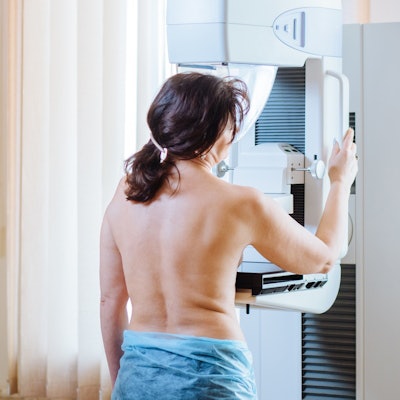
Women's imaging is an umbrella term covering different aspects of medical imaging focused on women. But it may be time to stop using this term, according to an editorial published October 17 in the Journal of the American College of Radiology.
Women's imaging has typically encompassed breast imaging, pregnancy imaging, and transvaginal imaging. However, Dr. Amanda Lenderink-Carpenter from Kaiser Permanente in Seattle and Dr. Lars Grimm from Duke University wrote in their editorial that the label "women's imaging" is nonspecific, anatomically inaccurate, ignores sex while focusing on gender, does not include men who need breast imaging, and risks stigmatizing transgender and gender nonconforming patients.
"This is really about inclusivity, sensitivity and elevating the care we offer to all our patients," Lenderink-Carpenter told AuntMinnie.com. "I think we all owe it to our patients to actively work to disrupt the bias."
"Women's imaging" was first used in the 20th century when breast imaging first came to prominence and national guidelines were still in development. Screen-film mammography and ultrasound were the methods used during this time.
However, breast imaging has evolved since then, with digital mammography and digital breast tomosynthesis (DBT) being employed since then. With more information coming to light about breast density, supplemental ultrasound volumes have also increased. Also, breast MRI is being used in high-risk screening and breast cancer staging settings.
"I believe at the time of its origin the term had very logical and good intent, but over time it has almost become a way to marginalize the specialty of breast imaging," Lenderink-Carpenter said.
The authors wrote that while the "women's imaging" label places a gender on breast imaging, "all humans, regardless of sex and gender, have some breast tissue which may need to be imaged during their lifetime."
They also added that the gender label risks creating further stigma for transgender and gender nonconforming patients, as well as cisgender men. In the U.S., there is a relative lack of data examining the needs of trans patients in breast imaging. That doesn't mean radiologists aren't interested though in the issue. For example, researchers in a 2021 study noted that while radiologists may differ in their practice and knowledge of screening trans patients for breast cancer, "many" are interested in contributing data to inform guidelines. A 2022 study, meanwhile, found that most hardware and software vendors report having a third gender option along with male and female.
The authors wrote that while screening guidelines have been established, their publication is "pointless" if the breast radiology community does not provide an inclusive environment for cisgender women and men, trans women and men, and gender-diverse patients.
However, the two noted that "women's imaging" should not be mixed in with "women's health," writing that programs for the latter place importance on the unique needs of women who have historically been marginalized. They wrote that a comprehensive women's health program may include multiple specialties and offerings that include different imaging services.
"Pregnant patients need obstetrics ultrasound, former smokers may need lung cancer screening with low dose CT, women with cardiac disease may need angiography, and screening-eligible women need mammography," they explained.
Grimm said that at Duke, the university no longer offers a women's imaging fellowship and has switched to using a two-step method to establish gender identity. Along with that, their electronic medical record now collects preferred pronouns for patients.
"We can still do more, but every step helps," he said.
Grimm and Lenderink-Carpenter are continuing to raise awareness and pursue research projects through work with the Society of Breast Imaging and the American College of Radiology. Grimm told AuntMinnie.com one of the major goals of colleagues is to include gender identity in national registry databases.
"This will allow us to collect better information on outcomes for non-cisgender patients and thus allow us to better tailor screening strategies and outreach efforts," Grimm said.




















